So I'm working on a network flow problem and have to be able to delete the right half of my bipartite graph in order to deal with multiple graphs at once. Here's how I have my node and edge classes set up:
class Node {
public:
Node();
int id;
int visited;
Node_Type type;
vector <bool> letters;
vector <class Edge *> adj; // Adjacency list
class Edge *backedge;
};
class Edge {
public:
Node *to;
Node *from;
Edge *reverse; // Edge with opposite to/from
int original; // 1 on normal
int residual; // 0 on normal
};
And a potential graph can be seen in this image:
Where my goal is to delete all edges and nodes to the right of the second column.
I have all my nodes organized in a vector of Node pointers, indexed from left to right/top to bottom, and I'm trying to traverse that vector and delete any edges contained in a node's adjacency list that are within the second and third columns or the third and fourth columns. After which I'll traverse backwards and delete the sink node as well as the third column's nodes, then finally resize the nodes vector to only accommodate the first two columns of nodes.
Here's how I'm doing that:
void DeleteHalfGraph() {
int i, j;
// Delete all edges between dice, words, and the sink
for(i = 1; i < nodes.size(); i++) {
if(nodes[i]->type == DICE) { // DICE refers to the second column of nodes
for(j = 0; j < nodes[i]->adj.size(); j++) {
if(nodes[i]->adj[j]->to->type == WORD) {
// WORD refers to the third column of nodes
delete nodes[i]->adj[j];
}
}
}
else if(nodes[i]->type == WORD || nodes[i]->type == SINK) {
// SINK refers to the 4th column of nodes
for(j = 0; j < nodes[i]->adj.size(); j++) {
delete nodes[i]->adj[j];
}
}
}
// Delete all nodes now not connected to edges
// minNodes = 5, size of the vector without the 3rd/4th columns
for(i = nodes.size() - 1; i >= minNodes; i--) {
if(nodes[i]->backedge != NULL) delete nodes[i]->backedge;
delete nodes[i];
}
nodes.resize(minNodes);
}
The error I'm getting when compiling is:
*** Error in `./worddice': malloc(): memory corruption (fast): 0x0000000000c69af0 ***
I very well just may not be understanding my pointers correctly as I haven't dealt with deallocating memory like this recently. Regardless, where am I going wrong? Any help is greatly appreciated.

#define NULL 0 if(nodes[i]->adj[j]) { delete nodes[i]->adj[j]; nodes[i]->adj[j] = NULL ; }– diogoslima Apr 14 '17 at 00:15